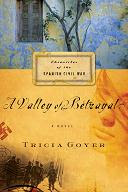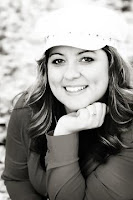the route to safety is blocked and fighting surrounds her. On her darkest night,
Sophie takes refuge with a brigade of international compatriots. Among these
volunteers, she pledges to make the plight of the Spanish people known
around the world through the power of art.
Well, anyone who knows me also knows that I am a HUGE fan of Tricia Goyer‘s. I find her to be an amazing woman–friend, wife, mother, homeschooler, writer, minister… Being a homeschool mom myself, I’m absolutely intrigued that she can manage all these tasks. Impressed, really. Anyway, enough rambling…on to Valley of Betrayal.
 It came in the mail today. I grinned shamelessly, but set it aside to read on my vacation a week later. An hour later, I walked past the book–and it snagged me. I picked it up, thumbed through it, read the back cover copy…again. Stared at the cover. Took it with me upstairs.
It came in the mail today. I grinned shamelessly, but set it aside to read on my vacation a week later. An hour later, I walked past the book–and it snagged me. I picked it up, thumbed through it, read the back cover copy…again. Stared at the cover. Took it with me upstairs.
That was my first mistake. Before I realized what happened, I’d read three chapters. I was supposed to be working on things for a contest and preparing for our vacation. But that’s what’s so amazing about Tricia’s writing. She makes you care. The worlds and characters she creates pull on your heart like 12 Gs!! You can’t stop reading–more than that–you don’t WANT to. 😀
Get sucked in like I did. Read the first chapter HERE!
The Story Behind the Novel:
A few years ago when I was researching for my fourth World War II novel, Arms of Deliverance, I came across a unique autobiography. One B-17 crewmember I read about claimed to make it out of German-occupied
Nazi tanks rolled across the hillsides and German bombers roared overhead, dropping bombs on helpless citizens. Italian troops fought alongside the Germans, and their opponents attempted to stand strong—Americans, British, Irishmen, and others—in unison with other volunteers from many countries. And their battleground? The beautiful Spanish countryside.
From July 17, 1936-April 1, 1939, well before
Unlike World War II, there is no clear line between white and black, good and evil. Both sides committed atrocities. Both sides had deep convictions they felt worth fighting and dying for.
Loyalists—also know as the Republicans were aided by the
Nationalists—or Francoists were aided mainly by
During the Spanish Civil war, terror tactics against civilians were common. And while history books discuss the estimated one million people who lost their lives during the conflict, we must not forget that each of those who fought, who died, had their own tales. From visitors to
Tricia Goyer, October 2006


Comments 1
Wow! I love it! You know how to make my day!!! 🙂